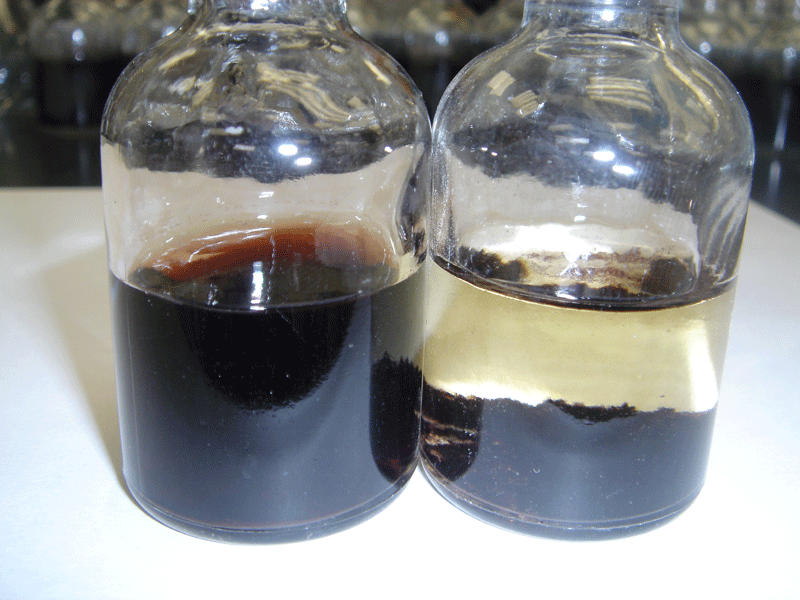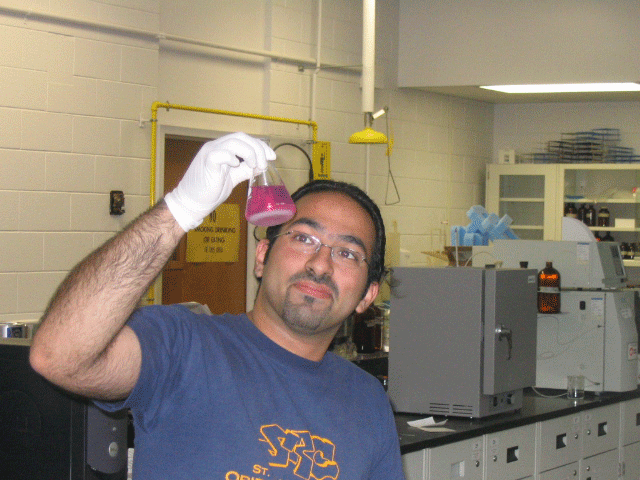Adding value to soy hulls
UTILIZING AN ENZYME IN SOY HULLS MAY PROVIDE A NEW MARKET OR ONTARIO FARMERS
soybean hulls are a co-product of crushing or oil extraction. Traditionally, they are used as an excellent source of crude fibre in animal feed. But new research in Ontario is focused on alternative and environmentally friendly uses for these hulls – also known as seed coats – that could provide value-added market opportunities for farmers.
Dr. Keith Taylor, a professor in the Department of Chemistry and Biochemistry at the University of Windsor, has been studying how soybean peroxidase found in hulls can be used to clean wastewater, especially from refineries, metal casting industries, wood products production and coal tar processing.
Peroxidase is extracted from the soybean hulls and the enzyme is used to oxidize phenolic compounds in the wastewater. This means the enzyme actually builds up the phenolic compounds in the water to the point where they become insoluble and can be physically separated from the water. The clean water can then be safely re-used. Once the peroxidase has been removed from the hulls, they can still be used in animal feed with limited impact on its quality.
“There is potential for this to at least double the value of the hulls,” says Taylor. “The enzyme is just sitting in seed coats now and no one is using it, so it is absolutely a value-added opportunity.”
Below: The vial on the right shows wastewater before treatment. Although it appears clear, it is full of toxins. After treatment (the vial on the left) the toxins have solidified and can easily be removed.

breeding better coats
Research has shown that different soybean varieties contain different levels of peroxidase in their seed coats, which provides an excellent opportunity for developing an identity preserved, value-added market based on peroxidase.
This is what Dr. Doug Johnson, a biologist at the University of Ottawa, and Drs. Brian Miki, Dan Brown and Mark Gijzen from Agriculture and Agri-Food Canada in Ottawa and London have been working on. Johnson says that depending on the cultivar, five to ten percent of the seed weight is seed coat and although there are approximately 2.5 million tonnes of soybeans produced in Ontario annually, that is not a significant number on the world market.
“Our question was what do we do to make seed coats more valuable? How can we return this value to soybean growers?” he asks. “And we have to find a way to return this value to growers here because we can’t compete with much larger scale commodity markets with any sort of economic advantage.”
Ontario already has a well-established system for identity preservation so Johnson and his team focused on developing a soybean that could express varying types of peroxidase with the idea that Canadian farmers could gain value by offering the global market a specialty product. They identified and cloned the gene for soybean peroxidase and then began work on expressing other enzymes, such as horseradish peroxidase and laccase.
Horseradish peroxidase is used in diagnostic testing and laccase can be used in food processing, bioremediation – returning an environment to its natural state – and in pulp and paper processing, where it replaces the use of chlorine.
The good news, according to Johnson, is that they were successful at producing laccase and horseradish peroxidase in the seed coats, but unfortunately, the expressions weren’t found to be at a high enough level to make them economically viable products. This isn’t unusual when working with transgenic organisms and continued experimentation and breeding is what leads to increased levels and stable expression, he adds.
“It is feasible to produce these enzymes but now we need to get them expressed in the seed coats at high levels so that growers could benefit,” he says. “Identity preservation can be our edge as we can’t compete on volume alone.
“Johnson says his team will continue this work if they can obtain additional funding. Although their initial research was supported by the National Science and Engineering Research Council and the Ontario Soybean Growers, as well as by Iogen Corporation and Soy 20/20, the main focus of finding new funding at this stage in the research is through industry partnerships.
Partnering with industry is also what Taylor needs to take his industrial wastewater work to the next level. Currently, there are no commercial providers of soy peroxidase in Canada or elsewhere and he is working on encouraging supply chain partners to join together to develop a commercial enzyme extractor. Taylor says the production process is not a complicated one technically and that the research and feasibility work has been done.
A sensible business approach, he suggests, could be a partnership between an enzyme producer and a crushing operation, where enzyme extraction could be an add-on business to the crushing since soy hulls are a co-product of crusher’s oil extraction activities.
“The commercialization of soybean peroxidase – using one industry’s by-product to treat the waste of another’s – represents a whole new level of transition from a petroleum-based economy to a bioeconomy,” he says. “But we need funding to do the further development and to take this to commercialization.”
Soy 20/20 helps support research like Taylor’s and Johnson’s by working to connect them with different industry and government partners and to help obtain funding, says Jeff Schmalz, Soy 20/20’s President.

Above: Research associate Mohammad Mousa looking at a waste water sample.
“Our mandate is to develop and expand market opportunities for Canadian soybeans,” he says. “There is excellent potential for adding value to soy hulls through enzyme extraction, but we need partnerships with government and industry to help take this forward to commercialization and make it a viable opportunity for our growers.”
For more information, visit Soy 20/20 online at www.soy2020.ca. •

















